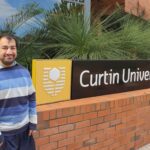Twelve years ago, deep beneath the sands of an Estonian beach, forty skeletons were found in the remains of a wooden boat, the final resting place of Viking warriors after an ill-fated raid in 750 C.E. Four of the men, lying shoulder to shoulder, swords clutched to their chests, were recently discovered to be brothers.
This new level of detail was made possible due to a large-scale ancient DNA project that sequenced the genomes of 442 Viking skeletons from archaeological sites across Europe and Greenland.
Published in Nature in September, the research confirms long-standing theories by archaeologists about Viking travel routes and culture. For instance, as the brothers’ skeletons revealed, Viking expeditions included close family members; and rather than being opportunistic raiders, Vikings from certain regions of Scandinavia chose specific destinations to establish trade and settlements.
“The Viking period represents one of the most dramatic territorial expansions in human history,” says Professor Morten Allentoft, an evolutionary biologist who had a supervisory role in the research and who is the new Head of Curtin’s Trace and Environmental DNA (TrEnD) laboratory.
“Our genetic analysis could confirm the archaeological interpretations of what actually happened back then. Vikings of Danish ancestry travelled into England; the Swedish into the Baltic and the Norwegians into Ireland, Iceland and Greenland,” he explains.
The research also determined that some individuals who were buried Viking-style in what is now the UK had no Scandinavian DNA, whereas other individuals buried in Norway had genetic similarities to East Asians and Siberians. These findings suggest that people not of Scandinavian origin took up the Viking way of life, making ‘Viking’ more an occupation rather than distinct ethnic group.

“Before being able to extract and analyse the ancient DNA from these skeletons, our understanding of this period relied heavily on the archaeological record and a few written sources, so it’s been great to be able to validate these with genetics,” Allentoft says.
“The archaeologists will often have a detailed understanding of when and where new cultures arose or diminished, but a more limited understanding of who these people actually were. This is where ancient DNA analyses come in, and our results show the true value of interdisciplinary research.”
The project is the one of the largest ancient DNA projects to date, taking more than five years to complete and involving more than 50 researchers from different nations and academic fields. Allentoft, who was a researcher with the University of Copenhagen during the project, was primarily involved with the research design and supervision, while other people in the team did “most of the hard work in the lab”, as he puts it.
Allentoft has ample experience in leading such large projects, and says it was extremely rewarding to be able to contribute to our knowledge of Vikings who, despite living around 1,000 years ago, continue to hold such fascination in the public’s mind.
“Understanding what happened in these ancient times is really about understanding ourselves; who we are and where we come from,” he says.
“We can call them Vikings but it’s essentially just a matter of understanding the detailed evolutionary history within this one species we call Homo sapiens.”

From Scandinavia to Australia
Allentoft has forged a successful career in using ancient DNA to peer back through time and piece together human evolution and influence on the natural world. In addition to the Viking research, he has helped to determine massive human migrations in the Bronze Age and the demise of New Zealand’s mega moas.
As soon as borders reopen, the young genetic sleuth will travel from Copenhagen to Perth, where he will turn his attention from fierce Norse raiders to cold-blooded reptiles.
“I have a personal passion for reptiles – ever since I was a kid I’ve been catching snakes and lizards – and there’s something about Australia’s environment that has fostered an extreme diversity in this group of animals.
“Most of my current research revolves around these magnificent scaly creatures and how they can be used as model organisms to understand evolution and changes in the environment through time.
“For example, we are just about to start up a really cool genomics project on the endangered olive python, found in the Pilbara.
“Every species has ‘signatures’ of selection – mutations in the genome that have proven beneficial sometime in the evolutionary past – so we can look at when those occurred in the python genes to determine how it adapted to the environment, and how it might be impacted by habitat change and ongoing climate changes.”

But in a country like Australia, with its vast stretches of unexplored landscapes, the challenge is often trying to locate a particular species. This is where environmental DNA (eDNA) comes in.
“Organisms leave traces of DNA wherever they are, so by taking samples of soil or water, researchers can extract any DNA that might be there and then compare the DNA sequences to large genetic databases to identify which species are present,” Allentoft explains.
eDNA not only gives biologists a nuanced understanding of species distributions through space and time, but can also inform better conservation and management efforts of certain flora and fauna, ensuring the biodiversity we have exists for years to come.
“It’s one thing to be able to understand the past, but we need to use that knowledge to try and positively change the future,” Allentoft says.

When he’s not studying bits of old bones or catching snakes, Allentoft will be progressing the work of the TrEnD lab; he is set to take over from Professor Mike Bunce, whom Allentoft has previously worked with as PhD student.
“eDNA is a fantastic biomonitoring tool that has been developed and optimised in the TrEnD lab by Professor Bunce and his team.
“The lab is well-equipped with cutting edge technology to conduct high quality DNA research. Especially if you’re working with small amounts of eDNA, or ancient DNA that may be damaged or degraded due to its age, you need a very clean and sterile environment, and the TrEnD lab is especially suited to this type of work.
“I can’t wait to merge the lab’s expertise with my own ancient DNA and genomics background to study Australian biodiversity.”
When asked what type of person makes a successful geneticist, Allentoft says it helps to have an understanding of bioinformatics and some knowledge of computer programming, because there is a lot of data to catalogue and interpret, and demand in the field is growing. However, the most important quality of all he says is not a skill, but a state of mind.
“You need to have basic curiosity, because that’s where you get ideas. Every time you look under a rock or turn over a leaf, there are ideas to be found. DNA is a wonderful tool to satisfy this curiosity and understand the natural world.”



